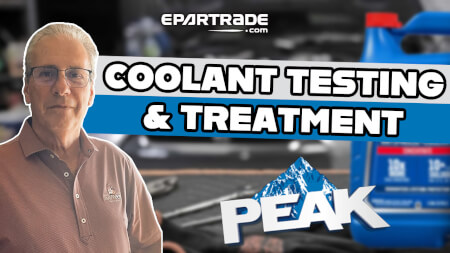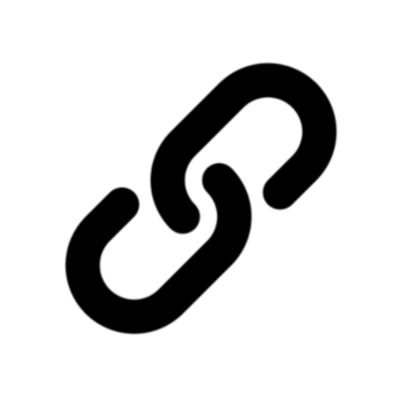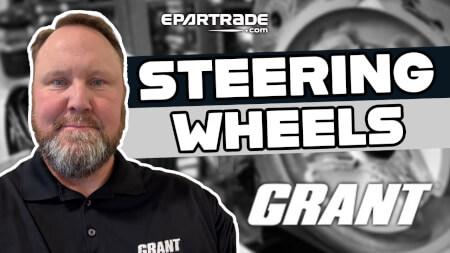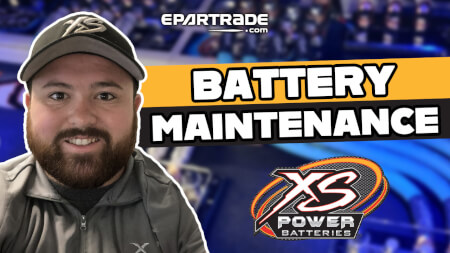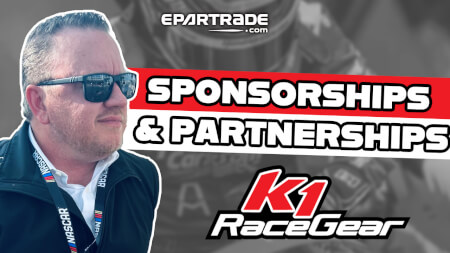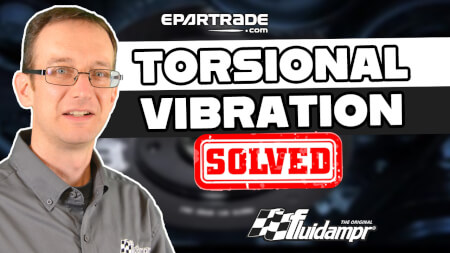October 29th 2025
Coolant Testing & Treatment: Keeping Engines Performing Under Pressure
In the closing episode of the 2025 season of Race Industry Now, EPARTRADE welcomed Joe Long, Senior Field Technical Trainer at Old World Industries, makers of PEAK coolants, alongside Chuck Lynch, Vice President of Technical Service at the Automotive Engine Rebuilders Association (AERA).
The topic — “Coolant Testing & Treatment: Best Practices for Racing, Performance & Heavy-Duty Engines” — dove deep into one of the most overlooked yet critical fluids in any high-performance or commercial engine: coolant.
The topic — “Coolant Testing & Treatment: Best Practices for Racing, Performance & Heavy-Duty Engines” — dove deep into one of the most overlooked yet critical fluids in any high-performance or commercial engine: coolant.
Beyond Just Antifreeze
Lynch opened by noting that many racers still underestimate coolant:
“People think coolant is just about not freezing or boiling, but the chemistry behind it is complex — and neglecting it costs power, parts, and reliability.”
Long agreed, explaining that modern coolants are engineered fluids designed to manage not only heat transfer but also corrosion, cavitation, and material compatibility.
“We’re not just talking about ethylene glycol and water anymore. Today’s coolants use additive packages tailored for aluminum, cast iron, brass, and different gasket materials — and those additives have a lifespan.”
The Science of Stability
Long detailed how maintaining coolant chemistry directly impacts performance:
- pH Balance: “A balanced coolant should stay between 8.0 and 10.5 pH. Drop below 7.5 and corrosion accelerates fast.”
- Electrolysis Prevention: Stray electrical currents from poorly grounded components can degrade coolant and etch aluminum surfaces.
- Water Quality: “Using tap water is one of the most common mistakes we see,” Long said. “You introduce minerals and ions that destabilize the inhibitors and promote scale buildup. Always start with distilled or deionized water.”
He also emphasized the need for regular testing, not guesswork. Simple test strips or refractometers allow mechanics to monitor freeze-point, additive levels, and pH to ensure coolant remains protective rather than corrosive.
Contamination, Filtration, and Real-World Lessons
From dirt-track sprint cars to diesel haulers, coolant systems face constant contamination.
Long illustrated the issue:
Long illustrated the issue:
“I’ve cut open plenty of radiators that looked like they’d been filled with concrete. Stop-leak additives, mixed chemistries, and rust particles will clog narrow-fin cores and reduce cooling efficiency by 30 percent or more.”
He recommended routine flushing and filtration, using inline coolant filters in high-load or long-duration engines. These filters capture particulates while allowing additive replenishment through charge-type filters — a method long used in heavy-duty fleets but increasingly relevant to endurance and off-road racing.
Mixing Coolants: A Costly Shortcut
One recurring theme was the danger of mixing incompatible coolants.
“People see green, red, or yellow and assume it’s all the same,” Long warned. “Mixing organic-acid-technology (OAT) coolants with older silicate-based ones can cause gel formation, plugging, and loss of heat transfer.”
Lynch noted that AERA has documented numerous premature head-gasket failures linked to such contamination. The takeaway: always verify chemistry type — IAT, OAT, or HOAT — and drain completely when switching products.
Race-Specific Considerations
While performance engines typically run hotter, Long explained that coolant formulation still dictates stability:
- Boiling Point Margin: “With a 15-psi cap, a 50/50 mix boils near 265°F. But localized hot spots around cylinder liners can exceed 400°F, so you need proper additive films to prevent micro-boiling.”
- Aluminum Block Protection: Additive depletion leaves aluminum porous and pitted.
- Coolant Velocity: In high-flow racing systems, cavitation erosion on pump impellers becomes a real issue if inhibitors are exhausted.
He also discussed the trend toward glycol-free racing coolants for sanctioning compliance. “These coolants rely on surfactant technology for heat transfer but lack corrosion reserves, so post-race inspection and draining are essential.”
Testing Intervals and Maintenance Protocols
For both professional teams and heavy-duty fleets, Long advised coolant testing every oil-change interval or twice per season in racing. The process should include:
- Visual Inspection for discoloration or debris.
- pH and Additive Test via strip or lab analysis.
- Specific Gravity or Refractometer Check for freeze-point accuracy.
- Pressure Testing of caps and hoses.
“Think of coolant like brake fluid or oil,” Long summarized. “It’s a consumable with a service life, not a lifetime fill.”
The Bigger Picture: Engine Longevity and Efficiency
Lynch closed by reinforcing that coolant management is both a performance enhancer and cost saver. Proper chemistry maintains laminar flow, consistent cylinder temperatures, and prevents detonation risk.
“The difference between an engine that lasts a season and one that fails mid-race can come down to something as simple as a $10 test strip,” he said.
About the Speakers
Joe Long, Senior Field Technical Trainer at Old World Industries, brings decades of field experience across motorsports, fleet maintenance, and coolant chemistry education. His hands-on approach and deep understanding of chemical inhibitors have made him a trusted voice across OEM and aftermarket sectors.
Chuck Lynch, Vice President of Technical Service at AERA, oversees technical programs supporting engine builders worldwide. His perspective connects laboratory science with real-world shop practices.
Conclusion
The final Race Industry Now webinar of 2025 underscored a vital message: managing coolant is managing engine health. Whether it’s a nitro dragster, circle-track car, or long-haul diesel, the principles remain the same — test, treat, and trust the chemistry.
As EPARTRADE’s season wrapped up, the conversation reminded attendees that even the most advanced engines depend on fundamentals — and that sometimes, the smallest details in maintenance make the biggest difference on race day.
For more information, watch the full webinar here.
